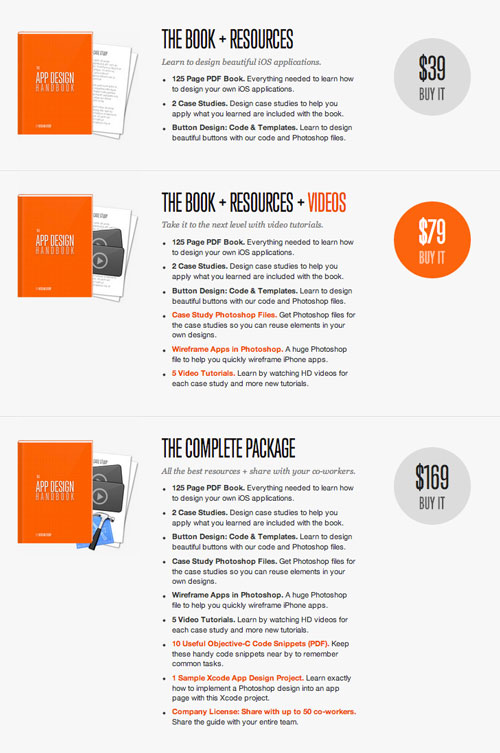Pricing a product is partly an art and partly science. Doing it right would lead to significantly increase revenue. There are many different ways to scientifically research your market, find out how much your customers are willing to pay and perform much analysis with fancy graphs.
I am not going to talk about that, for two reasons:
- I haven’t done such a complex analysis at all.
- I think almost 90% of products are priced by pulling a number out of thin air. Or at least, our of a competitor’s page.
For a product that’s a commodity, you can just pull a number from your competition’s pricing page and just replicate it. It should work fine. But there is nothing differentiating you from them and most entrepreneurs end up reducing the price. The minute you compete on price, it’s a race to the bottom.
There are a few ways to think about pricing that can make or break your product. It shows that you are different from them.
Problem with Single price
Most entrepreneurs just have single pricing for their products or services. Let’s say you are selling a SaaS product, you can go the easy route and have a single monthly price for the product. Or if you are consulting or running a service business, you would probably have an hourly rate for whatever you sell.
There are advantages and disadvantages of having a single price for your product or service. It is easier to explain and reason about. If you say, everyone pays only $20/month or $50/hour, you don’t give any preferential treatment to your customers. Your customer doesn’t have to think too much if they could get a better deal or maybe they need to choose a different plan. But the disadvantage here is that you are leaving a lot of money on the table.
Different customers have different needs. A solo founder might be able to pay only $20 per month for your SaaS product, but an enterprise would not even consider your product unless you have an “Enterprise” plan. Your customer is buying your product or service because they are in a lot of pain and you are solving that pain. If you are able to give them multiple pricing options, you get the advantage of increasing your average cart value.
Multiple Packages for EBooks
This doesn’t have to work only for SaaS products. Even if you write ebooks or informational products, you can have multiple price points by having different packages. Nathan Barry (of ConvertKit) initially started out writing design ebooks. But the way he priced his books were slightly different.
He learned that one can never become rich by having just a single price. He used 3 price points for 3 packages for his EBook + Video Courses.

In the initial 48 hours, his sales were (initial sale prices had a 20% discount):
- The Book ($39) Units: 151; Revenue: $4,448
- The Book + Videos ($79) Units: 104; Revenue: $6,296
- The Complete Package ($169) Units: 67; Revenue: $8,803
He got the maximum revenue from the highest package, even though the number of people opting for it was just 67. If he just had a single price point, he would have made only $11,117 vs the $19,547 he got in total.
In a blog post, he explains in detail about the various experiments he ran for his next book launch.
Upsells and Downsells
Another method to increase your revenue is to have a sales funnel instead of a sales page. In a sales page, you have a single page where you have the pricing for the product and your customer buys it. Once the sale is completed, instead of showing a thank you page, find out another product and offer that would complement the original offer you had just sold and pitch it on the second page. This is called an upsell.
If the user buys the upsell, you can take him to the next page of the funnel. If he doesn’t take up the upsell, you can show him a down-sell offer. A downsell is an offer that is much cheaper than the original upsell or has a payment plan to make the purchase decision easier.
Here is a simple diagram that explains it.

The reason why its important is, once common psychology. If a customer is buying something, it is easier to make another additional sale as compared to selling them something a few weeks down the line.
What you are packaging as the upsell/downsell offer is also important. Let’s say you have a SaaS product like MailChimp and your customers send marketing emails every day. The other problem that they might have is to write persuasive copy for their emails.
So you can bundle an ebook and video course for them on copywriting. This would be upsell and you could maybe sell it for $97 or $197. If the customers choose not to buy, you can show them a downsell offer of just the ebook for $37. People who can’t spend $197 for an entire course, can instead spend $37 for an ebook.
The number of upsells and downsells depend a lot on the product and niche you are in. But overall, if you use a sales funnel with at least one upsell and downsell, you are sure to make a few extra sales.
These are the different ways to price your product to increase the average cart value and thereby increasing the total revenue for your company.
Srini is an entrepreneur+developer who realised launching a successful product is much more than building cool features. He has helped numerous startups and businesses build successful businesses for the past 13 years.
